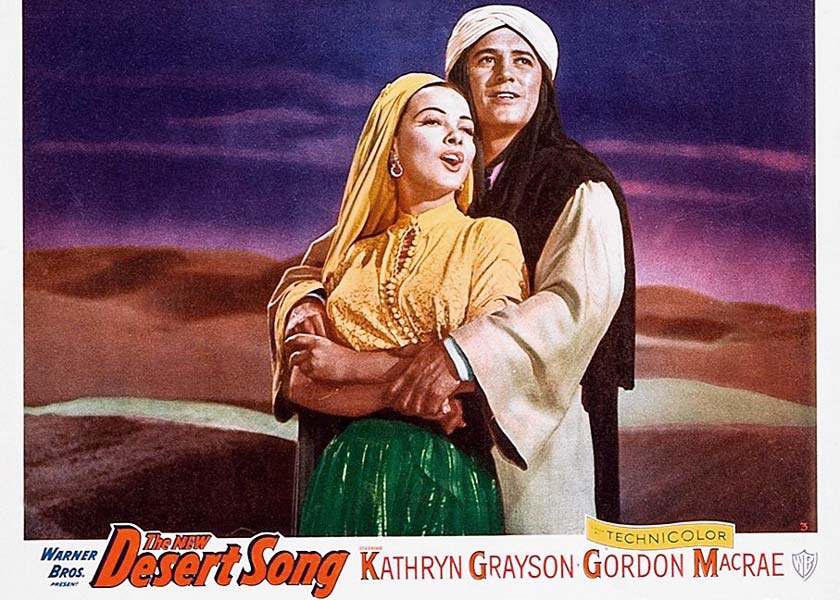Synopsis
In Algiers, capital city of Algeria in Northern Africa, the Riffs, a desert tribe, are led by the mysterious El Khobar (MacRae) against the forces of the treacherous Sheik Yousseff (Massey). The sheik's men have been stealing food and supplies from the Riffs. Captain Claude Fontaine (Cochran) of the French Foreign Legion supports the sheik against the Riffs, but the newly arrived General Birabeau (Ray Collins) is open to both sides. The general asks Paul Bonnard (also MacRae), a shy archeologist and El Khobar's alter-ego, to tutor his high-spirited daughter, Margot (Grayson).
As a ploy to force her father into the desert to learn about the Riffs' sufferings, Paul/El Khobar kidnaps Margot and takes her to the Riff's camp. Together in the desert, Margot and El Khobar fall in love. Yousseff's soldiers snatch Margot from the Riff camp, and El Khobar leads his men against them. Birabeau, Fontaine and the legionnaires arrive to end the fighting, Yousseff is arrested. El Khobar disappears and Paul appears with his clothes and announces that he is dead. Margot is deeply saddened by this news until she learns that the not-so-shy archeologist and El Khobar are one and the same.
Discussion
The original stage production of The Desert Song, with music by Sigmund Romberg and book by Otto Harbach, Oscar Hammerstein II and Frank Mandel, debuted on Broadway in 1926. The operetta has been filmed three times (1929, 1943, and 1953), and a live television special was produced in 1955. Romberg's music is the main reason for producing The Desert Song. On film, location shooting and exciting action sequences strengthen the weak plot.
The 1953 version is notable for the first-rate singing of Kathryn Grayson and Gordon MacRae, their pleasing personalities, the amused villainy of Raymond Massey, vivid color photography, and scenic desert locations. MacRae, lively and engaging, imparts earnestness, vigor, and humor to the character of El Khobar.
A singer first and an actress second, Kathryn Grayson had a relatively short film career, mostly at MGM, from 1941-55. She made three films with Frank Sinatra and costarred with singing actors MacRae, Mario Lanza and Howard Keel. When film musicals went out of fashion in the mid-1950s, her movie career ended. However, she continued her singing career in stage shows, nightclubs, and personal appearances through the 1990s.
Director H. Bruce Humberstone enjoyed a forty-year career directing well-made, entertaining films and television series from 1924 until 1966. During the 1930s he specialized in semi-comic mysteries, including four films in the Charlie Chan series. At Twentieth-Century Fox in the 1940s he directed musicals and comedies. In the 1950w his output included Westerns and two Tarzan films. He concluded his career directing episodes of television series. A straightforward, get-the-script-on-film type of director, his filmography includes no classics and displays few distinctive touches, but does includes some fine films, notably I Wake Up Screaming and Tall, Dark and Handsome (1941).
Further Reading
The Desert Song (1943)

